Perennial Rye Grass
| ✅ Paper Type: Free Essay | ✅ Subject: Environmental Studies |
| ✅ Wordcount: 2279 words | ✅ Published: 23 Sep 2019 |
Perennial Rye Grass
Skills Demonstration
Section A)
Each blade of grass only lasts on average 40 days if the paddock is untouched. If there are animals in it the blade will last less. On the diagram we can see a basic overview. Below the ground we have the root and above ground the shoot which is broke into 3 distinct parts the head, leaves and the stem. Each leaf has two parts the blade which is the top of the leaf and the sheath which is underneath. Where they both meets is called the “Intercalary Meristem” this is where cell division occurs, and we get growth beginning. Its location is different to most plants in that it’s on the bottom rather than the tip. The fact that it’s on the bottom allows the grass to regrow after the top is nipped off by the horse. Where the vascular part of the stem connects to the left is called the node. These nodes are also the connection point for buds that themselves can create new plants and growth. The crown is the point where the shoot and the root meet at soil level. The crown is a very important part of the plant as it contains large numbers of nodes all with a connected bud capable of producing new plants. As the crown is at soil level it avoids getting cut and continues to support growth unless paddocks become excessively damaged or poached in bad weather. This regeneration process is known as tillering and is very important in the regeneration of continual fresh forage. The collar region and its location would also be a key identification term. The Collar looks like a restrictively tight point on the stem, its often a different colour. The flower is also a helpful identifying feature as well as the leaf or blade that I mentioned above. Grasses can reproduce primarily in two way either by Creeping above or below the ground using stolon’s and rhizomes to create new plants or the second method of reproduction is via pollinated seeds which grow into new plants after they fall off the flower heads. There are three different growth habits of grass: Annual, perennial and biennials. Annuals go through their entire life cycle in one growing season. All the plant dies annually each year. Perennials continue to grow year after year for many growing seasons. The upper half of the plant each winter and then grows again the year after. However, some perennials are different and keep their leaves throughout the year. Biennials need two years to complete their life cycle. In year one a small rosette of leaves will appear during the growth season while in year two a stem elongates and flowers forming seeds. After the second growing season the plant then completely dies.
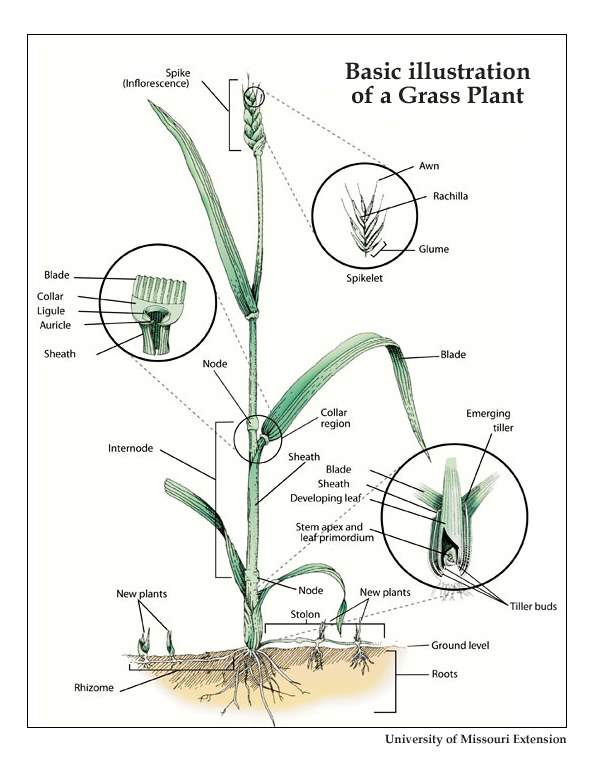
Section B: Collection of Samples
White Clover:
Identifying features:
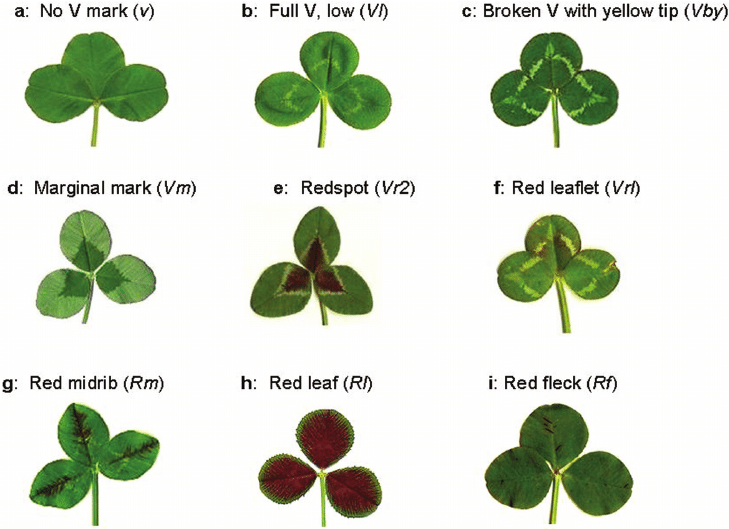
Above is a diagram of the different leaf’s found on White clover. My sample clearly is marked similarly to diagram b. (Full V Low)
Natural Habitat:
Regular rainfall doesn’t thrive in drought.
Growth Habits:
Grows low to the ground and spreads to fill empty spaces.
Reproductive Methods:
Spreads using “stolon’s” which are stems that grow horizontally above the ground.
Growth Season:
Grows all year round but growth is slower in winter.
Nutritional Value and function in the field:
It is a perennial legume. A very good source of protein and fibre in the paddock. Its largely known for its nitrogen production which can revitalise tired soil much cheaper than applying fertilizer.
Dandelion:
Identifying features:
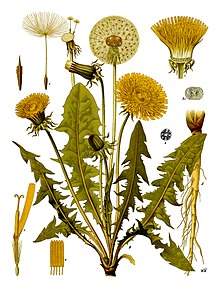
The leaves have a jagged edge and are long and narrow. The yellow flower is a key feature. And the triangular rosette shaped leaves just underneath the flower. They have a hollow stem. These features are all clear on the diagram above and my sample.
Natural Habitat:
Found in an abundance of places but the common theme is that they are found where land has been dug up or poached. Can also survive in sand dunes and chalk soils.
Growth Habits:
They have large tap roots and are perennial. They are very resilient and can grow almost anyplace.
Reproductive Methods:
They can regenerate from pieces of their tap roots. After they flower they turn to seed and each plant spreads seeds.
Growth Season:
They can flower from may until October.
Nutritional Value and function in the field:
They have various uses in human medicine and even salads. Its fairly high in vitamin C,D,B and A. A good source of calcium, sodium and potassium as well as promoting liver function, he production of bile and kidney function.
Dock Leaf:
Identifying features:

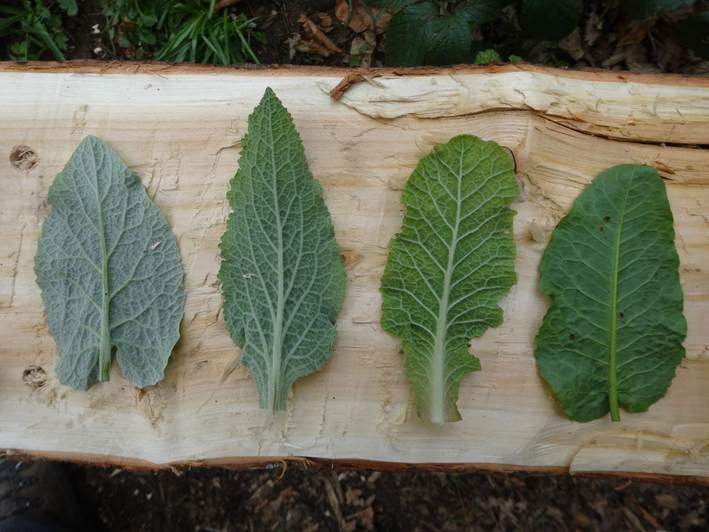
Above are pictures of 4 common leaves found in Ireland. Plant 4 on both diagrams is the dock front and back. We can see that shape of the leaf is different and the stem is much more consistent in it circumference to very near the top of the leaf. Please see my sample attached.
Natural Habitat:
It usually thrives while growing on acidic soil that is nitrate rich.
Growth Habits:
They are a very strong plant and Docks produce new plants from any roots that are left in the ground. The seeds of the dock ripen even before the flower and its viable as soon as you can see the
Reproductive Methods:
They are a very strong plant and Docks produce new plants from any roots that are left in the ground. When the seeds are spread a paddock can quickly become overcome with docks very quickly.
Growth Season:
Dock grow very quickly in the summer months. Hey usually wilt and regress away during winter and come back in the spring.
Nutritional Value and function in the field:
Although they have medicinal benefits to humans, they are not very beneficial to the paddock as they grow tall and they limit the sun reaching the grass and grow to fill large areas of the pasture which limits the use for grass to grow.
Creeping Thistle
Identifying features:
Long and narrow leaf’s and they grows low almost hugging to the ground.
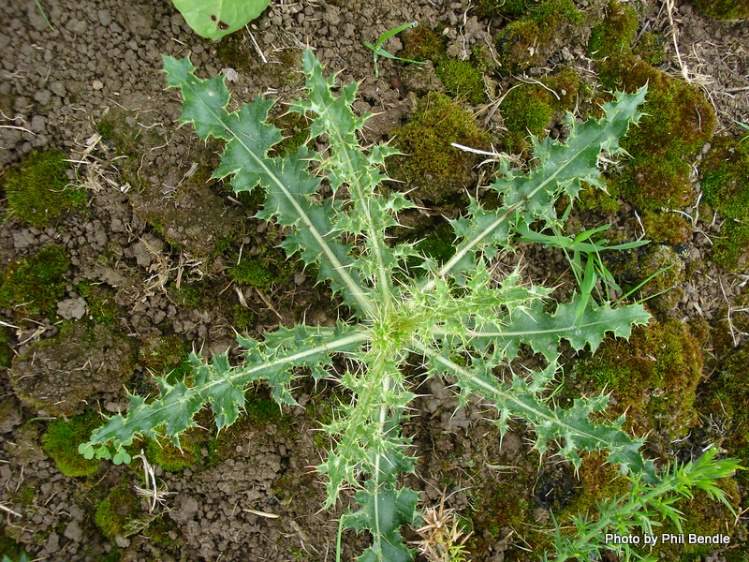
Natural Habitat:
Disturbed or cultivated ground. Will grow in most soils but it grows best in deep well aerated soils.
Growth Habits:
Its creeping roots help it to spread quickly and often forms large colonies quickly which impedes grass growth.
Reproductive Methods:
Seeds spread the plants. Birds often spread the seeds.
Growth Season:
Flowers from July until October. Seeds become viable to reproduce 10 days after flowering.
Nutritional Value and function in the field:
Animals don’t like eating them as they are prickly and they tend to usually effect the areas grass production so they effect the stocking rates on the land.
Common Nettle:
Identifying features:
Pointed leaves that seem hairy. The bottom of the leaves can sting causing some pain and swelling.
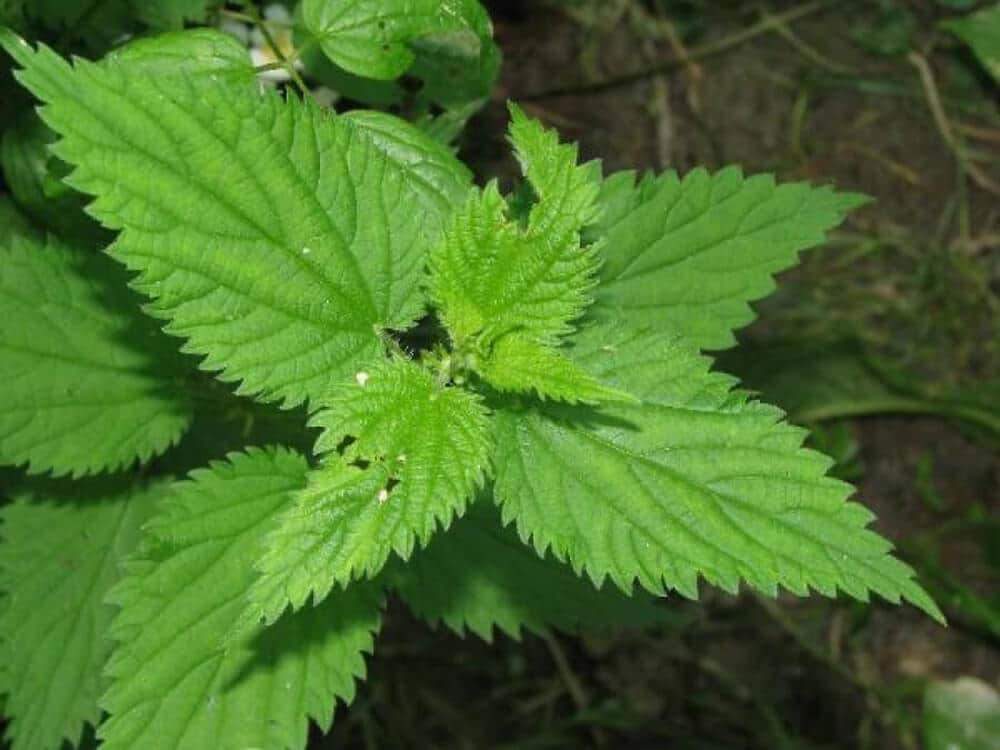
Natural Habitat:
Poached land, fence lines, unused land.
Growth Habits:
Overused land is susceptible and its perennial.
Reproductive Methods:
Like the white clover creeping stolon’s but the nettle also spreads by seed.
Growth Season:
Flowers from June until September and grows all year round but more vigorously during the spring and particularly the summer months.
Nutritional Value and function in the field:
Contains protein, iron, potassium, manganese, iodine, calcium and vitamins A,B, and C. Horses wont eat nettles so they are primarily a deterrent to grass growth as they grow
Crested Dogs Tail
Identifying features:
It usually grows in tufts, it tends to look stiff and has narrow green leaves. It has short seeds on its head pointing at a 45 degree angle and almost a rectangular shape to it head overall.

Natural Habitat:
Usually found in meadows or lightly used areas. Tends to be found in low lands but doesn’t appreciate waterlogging.
Growth Habits:
Perennial grass. Its seeds can be sowed at any time during the year. Primarily self seeds. Grows vigorously in early life but isn’t robust as it ages.
Reproductive Methods:
It thrives when left grow long in hay pastures. It doesn’t thrive in land that’s rarely cut or lawns that are mowed regularly that prevents self-seeding.
Growth Season:
Late January until early December
Nutritional Value and function in the field:
Leaf is low to the ground and its mainly stem. So does not contribute well to hay crops. It is good for sheep and livestock to graze as the leaf is low to the ground.
Yorkshire Fog
Identifying features:
Covered with soft hairs, grey-green downy look – purple tinged flower. Round shoot, no auricles
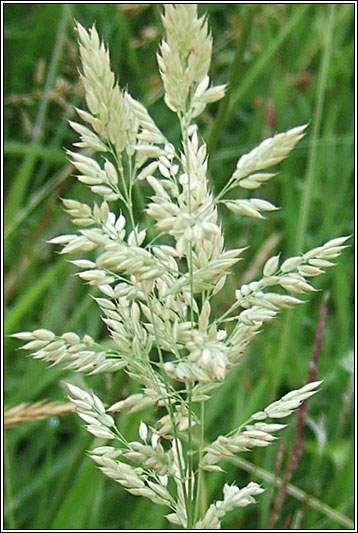
Natural Habitat:
Often found in mountainous areas and considered a weed because of its dense growth habits. Rough Grassland, waste ground, rough arable ground, water logged soils.
Growth Habits:
Perennial grass grows in tufts, tolerant of acidity grows in low fertile lands. Overgrazing negatively affects spreading.
Reproductive Methods:
The seeds germinate from September to December. They germinate better in light rather than dark. They produce profuse tillers and produce new shoots.
Growth Season:
Grows mainly from April until October
Nutritional Value and function in the field:
Not particularly palatable when the plant is young, not particularly a good source of nutrition and is considered a weed of grassland.
Perennial Rye Grass
Identifying features:
Small auricles. The leaf blade shows ribbed texture on its upper pointing surface and quite smooth below. The shoot is flatter than most grasses. It shows a reddish tint at the bottom of the stem.
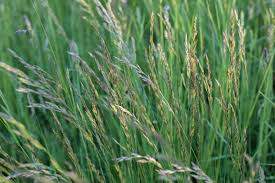
Natural Habitat:
Usually found on verges, poor pastures, waste ground. It is a tough native grass sometimes found in land that is not intensively managed.
Growth Habits:
Perennial, persists usually in fertile conditions. Poor in drought, poor in cold conditions also. Grows in clumps.
Reproductive Methods:
Tillering and seed germination. Tillering is better as it helps the density of the grassland. Ensuring the grass is eaten down in Spring and early Summer encourages significant tillering of the plant.
Growth Season:
April until October
Nutritional Value and function in the field:
Produces high levels of fructans so can be very beneficial to horses but in excess can be dangerous. Very useful for hay making
Timothy
Identifying features:
No auricles, rounded ligule, the leave has a blade that is slightly ribbed on the top surface while the bottom surface is smooth.
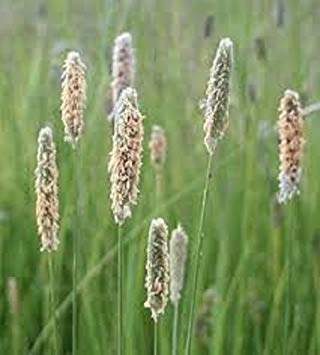
Natural Habitat:
Thrives in peaty or heavy soils, usually occurs in the wild.
Growth Habits:
Perennial, survives harsh winters, survives in low quality soils. Grows in bog lands. Finds it hard to compete with ryegrass in its 1st year but its yields improve as years go on.
Reproductive Methods:
The seeds germinate
Growth Season:
Grows all year around
Nutritional Value and function in the field:
Palatable as hay and as grassland. It usually has quite a low mineral content which is low in digestibility and protein.
Cocksfoot
Identifying features:
No auricles, the shoot is quite flat, the leaf is smooth on the topside and it is also smooth on the bottom side.
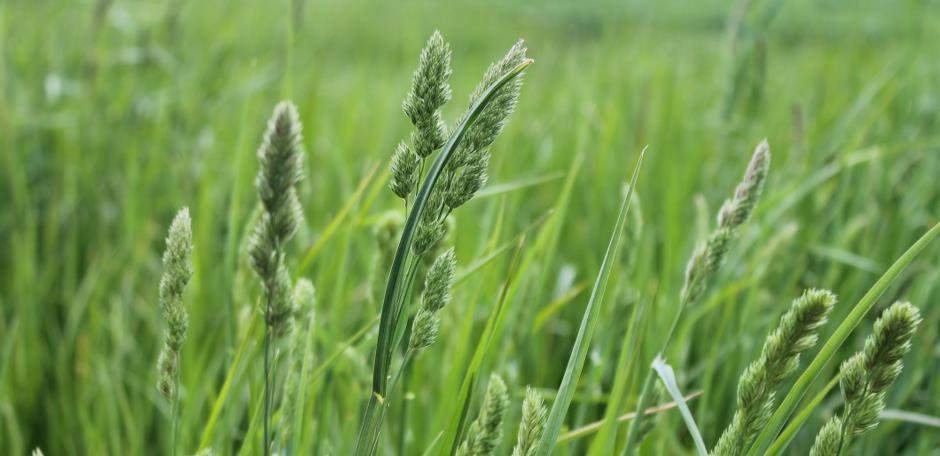
Natural Habitat:
Usually found on fertile soils, pretty good in drought, poor in marsh lands.
Growth Habits:
Perennial, can grow quite early and late in upper lands takes time to establish in a field and is rarely used in seed mixes.
Reproductive Methods:
Seeds germinate between September and April
Growth Season:
Grows rapidly in Spring, well in Summer and interestingly grows in Autumn before Winter and can also grow during Winter.
Nutritional Value and function in the field:
Not as productive as the ryegrasses. When it becomes stemmy it has low digestibility. Suitable for both grazing and hay production.
References:
- https://www.thelawninstitute.org/pages/education/grass-plant-physiology/plant-physiology/
- https://www.google.com/search?q=dandelion+key+identification&rlz=1C1EJFA_enIE780IE780&source=lnms&tbm=isch&sa=X&ved=0ahUKEwjspJ_T0YPgAhXmShUIHbxYAZIQ_AUIDigB&biw=1152&bih=753#imgrc=1Ig7VmAQknccuM:
- https://www.mckaysgrassseeds.com.au/red-clover-vs-white-clover-similarities-differences/
- https://www.researchgate.net/figure/Different-leaf-marks-found-in-white-clover-The-gene-symbols-are-as-originally-proposed_fig1_250119450
- https://www.arkive.org/common-dandelion/taraxacum-officinale-agg/
- http://www.irishwildflowers.ie/pages-grasses/g-32.html
- https://www.wildlifetrusts.org/wildlife-explorer/grasses-sedges-and-rushes/crested-dogs-tail
- https://www.google.com/search?q=crested+dogs+tail+grass&rlz=1C1EJFA_enIE780IE780&source=lnms&tbm=isch&sa=X&ved=0ahUKEwibo53vuJPgAhUhpHEKHaFMBfsQ_AUIDigB&biw=1152&bih=704#imgrc=mqzo5fa9UfTUAM:
- https://www.google.com/search?q=Perennial+Rye+Grass&rlz=1C1EJFA_enIE780IE780&source=lnms&tbm=isch&sa=X&ved=0ahUKEwi57pq9ypPgAhX4VRUIHVFMAHIQ_AUIDigB&biw=1152&bih=704#imgrc=fm-8-aPJT0ovFM:
- https://www.google.com/search?q=yorkshire+fog+grass&rlz=1C1EJFA_enIE780IE780&source=lnms&tbm=isch&sa=X&ved=0ahUKEwibjsSCypPgAhUqVRUIHU59B1AQ_AUIDigB&biw=1152&bih=704#imgrc=eFOXlv98hC-VlM:
- https://www.google.com/search?q=timothy+grass&rlz=1C1EJFA_enIE780IE780&source=lnms&tbm=isch&sa=X&ved=0ahUKEwiK5MmOy5PgAhXNURUIHWjOCCgQ_AUIDigB&biw=1152&bih=704#imgrc=mJM_9cm7gavudM:
- https://www.google.com/search?q=cocksfoot+grass&rlz=1C1EJFA_enIE780IE780&source=lnms&tbm=isch&sa=X&ved=0ahUKEwj_md7Uy5PgAhUjtHEKHYRmDY0Q_AUIDigB&biw=1152&bih=704#imgrc=6Lw3co01GS5K1M:
- http://www.wildflowers.ie/wild-zone/technical-wild-flower/weeds/dock.htm
- http://ketenewplymouth.peoplesnetworknz.info/friends_of_te_henui/images/show/3466-californian-thistle-cirsium-arvense
- https://en.wikipedia.org/wiki/Jacobaea_vulgaris
Cite This Work
To export a reference to this article please select a referencing stye below:
Related Services
View allDMCA / Removal Request
If you are the original writer of this essay and no longer wish to have your work published on UKEssays.com then please click the following link to email our support team:
Request essay removal


